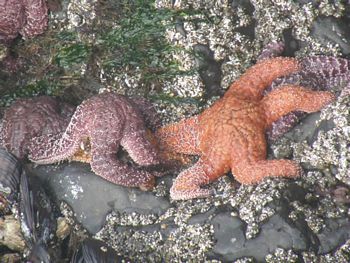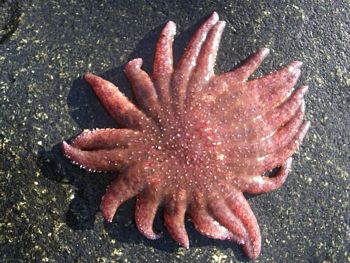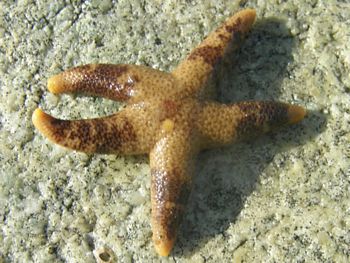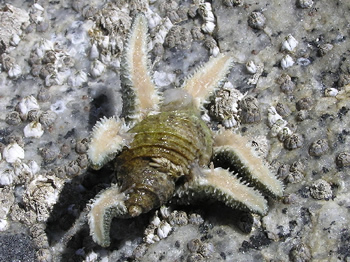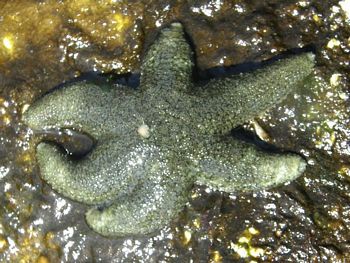|
__ |
|
Sea stars are sometimes called starfish, but they are not fishes at all as they don’t have fins, gills or scales. In general, they resemble beautiful stars. |
|
Sea stars belong to a group of marine creatures called Echinoderms, a word which means "spiny skin." Sea Urchins and Sand Dollars also belong to this group. |
| |
|
|
|
|
|
There are some 2,000 species of sea stars living in all sorts of areas. Some are in tropical waters, some in cold, some in deep, deep water and others in the intertidal zone. |
|
Although sea stars look smooth, they are actually covered with numerous spines on their upper surface. The underside is soft with lots and lots of tube feet that will look like they are waving at you. |
| |
|
|
|
|
|
Sea stars come in a huge variety of colours, sizes and shapes. Most have five arms or rays like this beautiful Pacific Blood Star, Henricia leviuscula. |
|
Some sea stars don't follow the five arm formula! The Six-rayed Sea Star, Leptasterias
aequalis, for example, has six arms. |
| |
|
|
|
|
|
Sea stars like this Sunflower Star, Pycnopodia helianthoides, add rays as they grow. This is one of the world's largest sea stars growing up to 40 in/102 cm wide. |
|
Light-sensitive eye spots are found at the tips of the rays of a sea star. The eye can't see much, but can detect light and dark. |
| |
|
|
|
|
|
If a sea star loses a ray, another will regenerate. It can take up to a year for a new ray to fully form. This Six-rayed Sea Star, Leptasterias aequalis, is in the process of regrowing a ray. |
|
On the underside, sea stars have hundreds of tube feet which are used to move around as well as hold on to their prey. |
| | |
|
|
|
|
|
Sea stars don't have any blood, instead they have unique water vascular system used for feeding, respiration and movement. They are able to pump water into their tube feet. |
|
On the top of a sea star you might notice a light coloured spot known as a madreporite. This structure is part of the sea star's water vascular system acting like a valve to allow water in. |
| |
|
|
|
|
|
Sea stars feed by holding onto their prey like this bivalve by opening its mouth and pushing its stomach into the bivalve's shell and consumes the animal. |
|
The spines on sea stars, clearly shown on this Rainbow Sea Star, Orthasterias koehleri, act as a protective armour against predators such as fish and birds. |
| |
|
|



